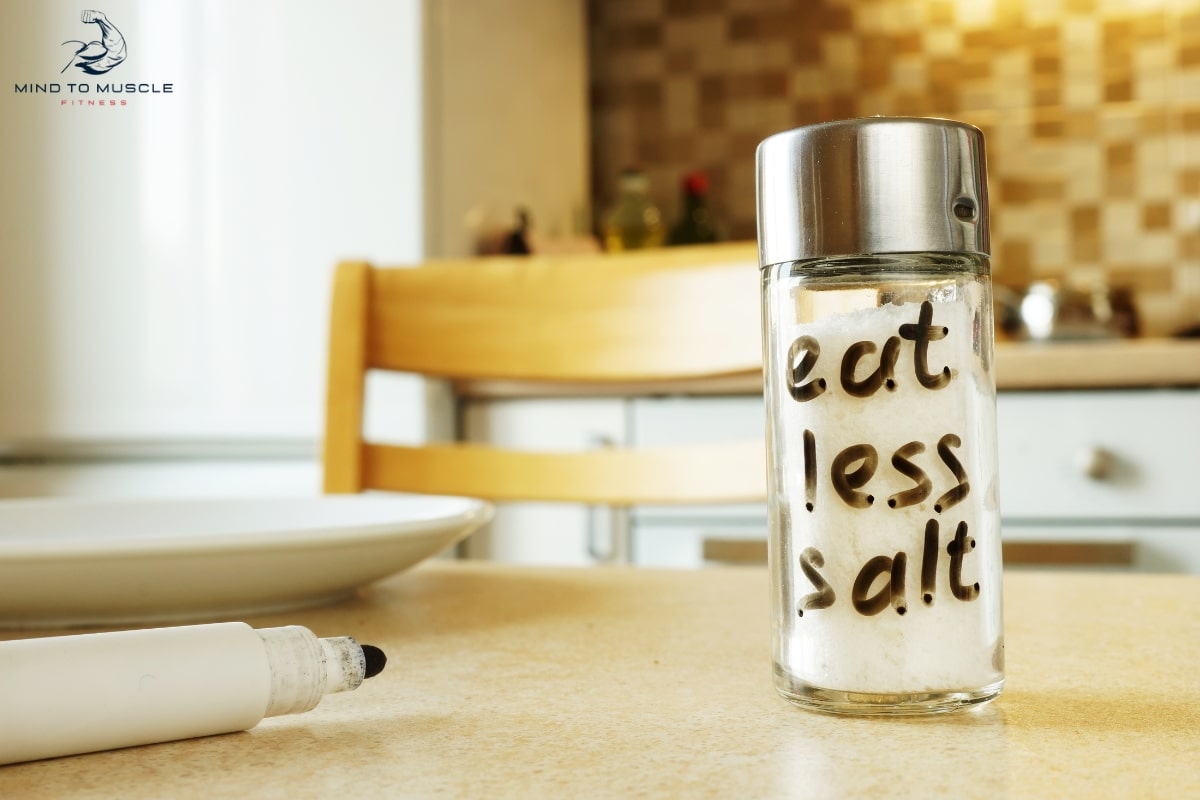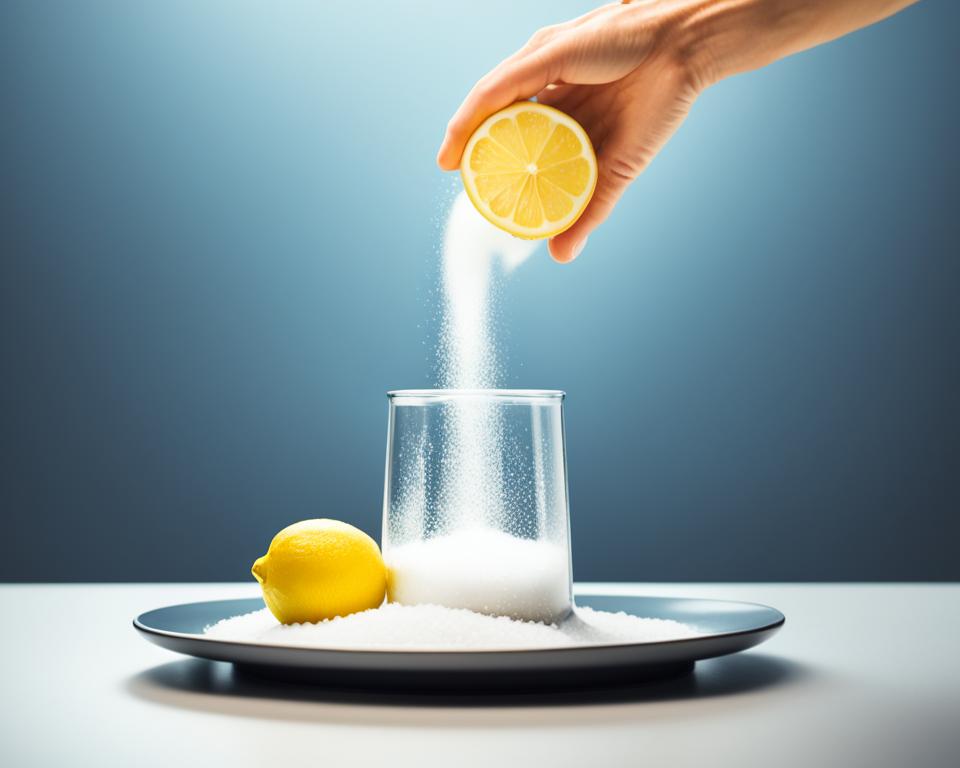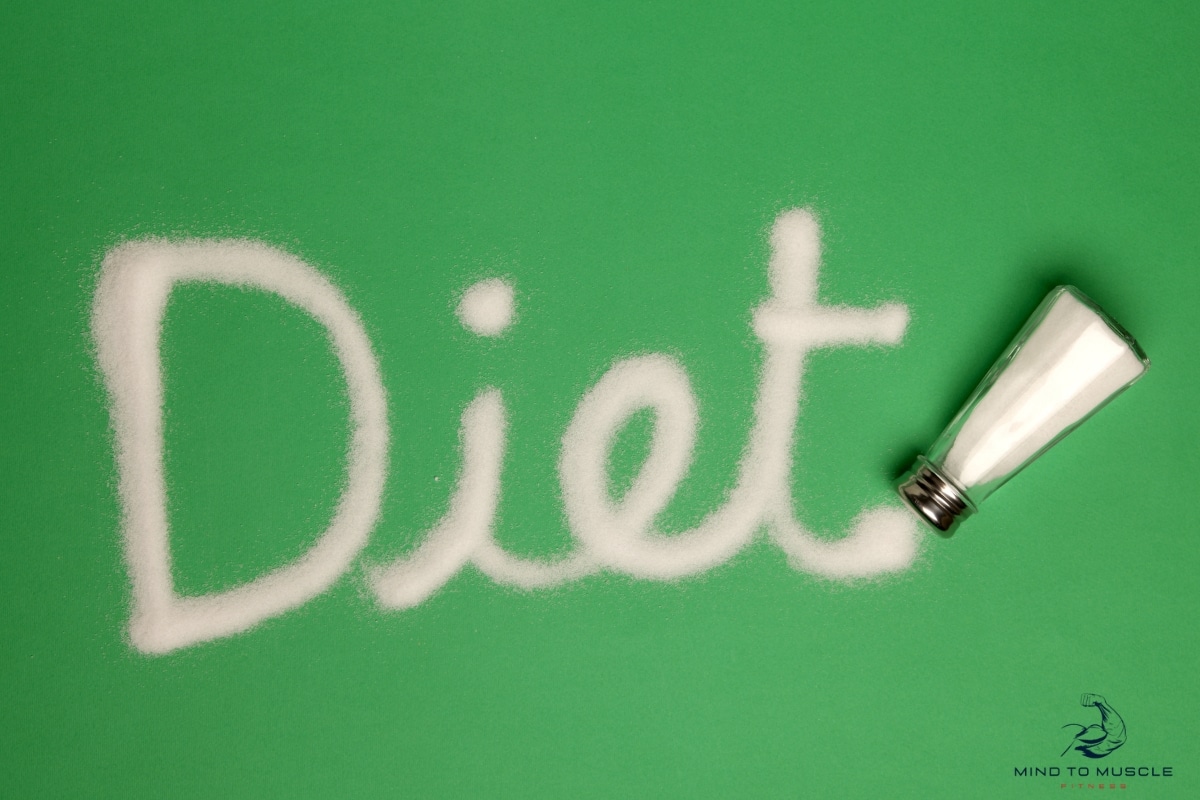
Is Salt Bad for You? Uncover the Truth for Wellness
It might shock you, but the average American consumes about 3,400 mg of sodium daily. This amount goes well beyond the recommended sodium intake by over 1,000 mg. I find this statistic quite alarming, considering its potential impact on our health.
A lot of our daily salt intake comes from processed and restaurant meals. It’s not just the sprinkle of salt on home-cooked food. Even with the known risks like high blood pressure, heart issues, and strokes, high blood pressure cases continue to rise each year.
I’m here to unpack the truth about sodium in our diets. Is limiting salt really beneficial as we’re told? Not all salt is the same. It’s important to find the right balance. Let’s explore the truth about salt and how it affects our health.
Key Takeaways
- Average sodium consumption in the U.S. greatly surpasses wellness guidelines.
- Most of our sodium intake stems from processed foods, not home seasoning.
- Health effects of salt like high blood pressure can lead to heart disease and stroke, the top killers in America.
- Reducing sodium can lower blood pressure, but the evidence on reducing heart incidents is mixed.
- Increasing potassium with fresh produce can countervail high sodium levels.
Understanding Salt and Its Place in Your Diet
Salt plays a big part in our diet and health. It’s key to know how it affects our heart and kidneys. Let’s dig into the facts.
The Vital Roles of Sodium and Chloride in our Bodies
Sodium and chloride are essential for our bodies. They help with muscle movement, sending nerve signals, and keeping fluids balanced. These elements work together to keep our body’s functions in check. When they’re out of balance, problems with heart disease or kidney function can happen.
Deciphering Sea Salt, Table Salt, and Himalayan Pink Salt
Himalayan pink salt is said to be healthier because of its minerals. But, table salt is heavily processed and loses its minerals. Sea salt is more natural than table salt. The type of salt you choose affects not just taste but health too. It pushes us to consider healthier salt options.
Recommended Daily Intake of Sodium
The American Heart Association suggests limits for sodium to avoid high blood pressure. They say less than 2,300 milligrams a day is good. Ideally, most adults should aim for 1,500 mg, especially if they have hypertension. It’s important to find a balance, as too much or too little sodium is harmful.
| Study | Findings | Implications |
|---|---|---|
| Global burden of hypertension (1990–2015) | Rise in hypertension rates globally | Highlighting the need for managed sodium intake |
| Modest salt reduction on blood pressure | Significant reduction in blood pressure | Supporting controlled sodium consumption |
| Low vs. high sodium diet effects | Lower blood pressure on low sodium diets | Encouraging reduced sodium dietary patterns |
| Sodium intake and all-cause mortality | No consistent relationship found | Questioning strict sodium reduction policies |
Is Salt Bad for You? Examining the Health Effects
When it comes to reducing salt in our diet, it’s not simple. It means more than just stopping the use of the salt shaker. It’s about knowing why it’s crucial to cut down on salt and its effects on health.
Let’s look at the facts. Adults should have 1,500 milligrams of sodium daily, say experts. However, most Americans eat about 3,400 mg a day, way over the recommended amount! This is a big deal because eating more than 2,300 milligrams can lead to serious health issues.
Most of the sodium we eat comes from food like breads, pizza, and sandwiches. Eating too much salt can increase the risk of diseases like high blood pressure, heart problems, and stroke. We usually get about 3,300 milligrams of sodium each day from our meals, but only 2,900 milligrams of potassium. This bad mix doubles the risk of heart attacks for some people.

Studies show worrying links. A study in 2016 connected too much sodium with a higher risk of heart disease and death. Another research in the same year supported this finding. By 2020, a review showed even a small increase in daily sodium could raise heart disease risk by 6%.
It’s not all negative, though. Too much sodium is harmful, but so is too little. Not enough salt can raise bad cholesterol and triglycerides and lead to hyponatremia. This means we need to find a middle ground because salt is important for our bodies.
Let’s think about our whole diet. Are we choosing meals high in sodium from restaurants or pre-packaged options? Or are we cooking at home, adding just a bit of salt for taste? Eating less processed, high sodium food and more fresh ingredients is key. This approach can protect our heart health without going to extremes. We still need more research since current studies give mixed signals about salt reduction’s benefits for people with and without high blood pressure.
The Misconceptions About Salt in a Healthy Diet
There’s a lot of debate about salt in your diet, whether its bad or not. Research shows that too much salt can lead to high blood pressure. But the story about salt in our diet is not that simple. Let’s look closer and clear up some common myths.
Myth vs. Reality: Debunking Salt Misconceptions
Sometimes, our beliefs about sodium and health don’t match the facts. A report for the Australian and New Zealand governments highlights this. It shows there are specific guidelines for sodium that help us find the right balance in our diet.
How Much Sodium Do We Really Need?
The World Health Organization gives different sodium guidelines for adults and kids. It’s not just how much salt we eat, but the type that matters. Understanding what makes up a good daily salt intake is key, especially considering our health.
Salt and Blood Pressure: Is There a Connection?
A lot of research, including a dose-response meta-analysis, links sodium intake to blood pressure. This shows why it’s important to know and control how much salt we eat for our heart’s health.
| Study | Findings | Implications for Sodium Intake |
|---|---|---|
| 2015 Eur J Clin Nutr | Direct impact of dietary sodium on the prediction of cardiovascular events | Importance of moderation in daily consumption |
| Heart 2013 | Low sodium diets in heart failure patients | Evidence supporting reduced intake for individuals with heart conditions |
| ESC/ESH 2018 | Dietary sodium reduction highlighted for managing hypertension | Reducing salt in diet is imperative for those managing high blood pressure |
| Diabetes Care 2011 | Link between dietary salt, mortality, and renal disease in type 2 diabetes | Indicates need for careful monitoring in diabetic patients |
Knowing this helps us understand the link between salt and high blood pressure better. Cutting back on salt can be very good for us. But, it’s using the right amount of salt that leads to better health.

Salt Reduction Strategies and Their Implications
The importance of reducing salt consumption is clear because the average adult eats more than twice what the World Health Organization (WHO) recommends. But we must watch out for the dangers of reducing salt too much, like higher heart disease risk due to increased cholesterol. It’s vital to find a balance, using salt alternatives to improve health without those risks.
WHO recommends eating less than 2000 mg/day of sodium to fight the link between salt and heart disease. This advice isn’t just good for our health—it also makes economic sense. For every dollar spent on reducing sodium, twelve dollars are saved. This is crucial because too much sodium is linked to 1.89 million deaths every year.
Foods rich in potassium, like avocados and spinach, can help fight sodium’s negative effects by flushing it out. But too much sodium can lead to thirst and high blood pressure. Too little can cause dizziness and tiredness. So, moderation is key. We’ll look at WHO’s plan to eat less salt and how to adjust our meals for better health.
WHO aims for a 30% relative reduction in the intake of salt by 2025 as part of global voluntary targets for the prevention and control of noncommunicable diseases.
| Intervention | Expected Benefit | Cost-Effectiveness |
|---|---|---|
| Reformulation of Food Products | Better control over consumed sodium levels, reducing heart disease risk | High: A practical approach with long-term health benefits for consumers |
| Supportive Environment in Public Institutions | Access to healthier food choices with lower sodium | Medium: Requires investment but shapes public consumption habits positively |
| Front-of-Pack Labeling | Increased consumer awareness and informed decision-making | High: Educates consumers with minimal cost |
| Mass Media Campaigns | Broader public education on the risks of high sodium intake | Medium-High: Wide-reaching impact but requires consistent messaging |
As I guide you through finding the right balance, remember that knowing more helps you choose better. Whether it’s the American average of 3,400 mg of sodium a day or WHO’s lower goal, making smart choices is key. With discipline and the right information—including using salt alternatives—we can all work towards better heart health.
Conclusion
In exploring the health effects of salt, I’ve learned our connection to this mineral is intricate. Asking is salt bad for you doesn’t have a simple answer. The facts show that too much salt can cause issues like water retention and high blood pressure. Americans typically consume about 3400 mg of sodium daily, much more than the 500 mg our bodies actually need. This high intake increases risks for salt and high blood pressure and stomach cancer.
But, consuming up to 2,300 milligrams of sodium, following CDRR guidelines, may be safer. This approach looks at the reality of our diets and health needs. It’s important to note that cutting back on sodium can reduce blood pressure. However, most sodium comes from processed foods, not the saltshaker. Foods like breads and pizza are major sources.
We should focus on eating less processed food rather than fearing salt. Our diet should have lots of unprocessed foods, rich in natural minerals. Adopting habits like drinking plenty of water, eating foods high in potassium, and balancing meals can help. These strategies help manage salt intake, leading to a healthier lifestyle overall.
FAQ
Is salt inherently bad for your health?
No, salt itself isn’t bad for you. Our bodies need it, but too much can cause problems like high blood pressure and heart disease. It’s all about balance.
What are the essential roles of sodium and chloride in the body?
Sodium and chloride help muscles and nerves work right. They also keep blood volume, hydration, and pressure in check. Sodium and chloride work together to maintain the balance of fluids and electrolytes, which is essential for overall physical performance. Staying properly hydrated and ensuring these minerals are at optimal levels can support workouts, including effective bodyweight bicep exercises like chin-ups or resistance band curls. By supporting nerve impulses and muscle contractions, these nutrients play a vital role in achieving fitness goals and maintaining strength.
How do different types of salt like sea salt, table salt, and Himalayan pink salt differ?
Sea salt and Himalayan pink salt are less processed, so they have extra minerals. Table salt is more processed and might have anti-caking agents. But all salts are mainly sodium chloride.
What’s the recommended daily intake of sodium?
The American Heart Association suggests staying under 2,300 milligrams a day. Ideally, aim for no more than 1,500 mg a day for most adults.
Why is reducing salt in your diet important?
Lowering salt helps prevent high blood pressure. This can stop bigger problems like stroke, heart disease, and kidney issues.
What are the common misconceptions about salt consumption and health?
People wrongly think only table salt affects sodium intake and that sea or Himalayan salt are much healthier. Also, some believe only those with high blood pressure need to watch their salt.
How much sodium do we really need?
It depends on the person, but generally, keep it under 2,300 mg a day. The best aim is around 1,500 mg for most adults.
What is the relationship between salt and high blood pressure?
Too much salt traps extra fluid in the body. This raises blood pressure by putting more strain on the heart.
Can you suggest some salt alternatives to use in my diet?
Sure! Try using herbs, spices, lemon juice, or vinegar for flavor. Potassium chloride is also an option but check with a doctor before using it.
What are the implications of salt reduction strategies?
Cutting down on salt can improve heart health and lessen the risk of stroke and heart attack. But it’s crucial not to cut sodium too much, as it’s needed for our bodies to function properly.



